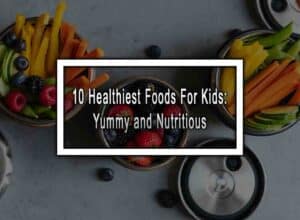Whirl Into Wellness: Unraveling the Fantastic Fiddleheads Health Benefits
Are you ready to dive into a green spiral of wellness? Fiddleheads aren’t just nature’s quirky decoration; they’re packed with nutrients that are as impressive as their distinctive scroll-like shape. In this exploration of the fiddleheads health benefits, we’ll uncoil the secrets behind these verdant vittles and discover why they deserve a spotlight on your plate. Buckle up for a journey through the forest of nutrition, where fiddleheads are the hidden gems waiting to be treasured in your diet!
1. Boosts Immunity
Fiddleheads health benefits include their high vitamin C content, which enhances the body’s immune defenses. This crucial component stimulates white blood cell production, safeguarding against infections. Antioxidants in fiddleheads similarly reduce oxidative stress and strengthen the immune system, ensuring an individual is equipped to combat various ailments effectively.
2. Good for Heart Health
Among its health benefits is its role in promoting heart health, thanks to fiber and omega-3 fatty acids. These nutrients help lower LDL cholesterol and inflammation, while omega-3 fatty acids regulate heart rhythms and blood pressure. Through these mechanisms, fiddleheads support a prevention strategy against heart disease, contributing to longevity and cardiovascular resilience.
3. Promotes Digestive Health
Another of Fiddlehead’s health benefits is the promotion of digestive health through its dietary fiber. This helps to regularize bowel movements, prevent constipation, and support a healthy gut microbiome. The fiber in fiddleheads keeps the digestive tract functioning smoothly, minimizing the risk of common digestive ailments and enhancing nutrient absorption for overall well-being.
4. May Prevent Cancer
Furthermore, fiddleheads health benefits in cancer prevention are noteworthy due to their antioxidants, such as vitamin A and phytonutrients. These substances protect cellular integrity and have demonstrated potential for disrupting cancer cell growth. The anti-inflammatory properties of certain compounds in fiddleheads may also play a role in preventing tumor formation, adding to their cancer-fighting potential.
5. Supports Bone Health
The vitamin K found in fiddleheads is crucial for bone health, as their health benefits once again shine through their nutrient content. Vitamin K is essential for bone protein synthesis and calcium regulation, directly impacting bone density and strength. This, combined with calcium and magnesium, underscores how fiddleheads contribute to the prevention of osteoporosis and fractures, making them a valuable dietary component for maintaining bone health.
Fern-tastic Finale: Celebrating the Wholesome Goodness of Fiddleheads Health Benefits
As we unfurl from this nourishing journey, it’s clear that the fiddleheads health benefits are as plentiful as they are potent. From their antioxidant armor to their slimming silhouettes, fiddleheads are the unsung heroes of the vegetable world. So, next time you’re traipsing through the farmer’s market or grocery aisles, keep your eyes peeled for these curly culinary champions. Energize your eating experience by inviting the dazzling health benefits of fiddleheads into your life—your body, taste buds, and Instagram feed will thank you!
Fiddleheads Health Benefits FAQ
Here are the most common questions about the fiddleheads health benefits.
1. What dishes can I make with fiddleheads?
Fiddleheads can be cooked in a variety of ways, including steaming, sautéing, boiling, or stir-frying. They can be used in salads, soups, stews, and pasta dishes. Some popular ways to prepare fiddleheads are to sauté them with garlic and lemon or toss them with olive oil and Parmesan cheese.
2. Are there any risks associated with eating fiddleheads?
Eating undercooked fiddleheads can cause gastrointestinal symptoms such as diarrhea, nausea, and vomiting. It is important to follow proper cooking techniques and to only consume fiddleheads that are freshly picked. Also, people with allergies to ferns or other plants should avoid consuming fiddleheads.
3. Where can I buy fiddleheads?
Fiddleheads are typically available in the spring season at farmer’s markets, specialty food stores, and some supermarkets. They can also be found online. It is important to buy fiddleheads from a reputable source and only consume fresh, young fiddleheads.
4. Can I eat fiddleheads raw?
Fiddleheads should not be consumed raw because they contain small amounts of toxins that can cause food poisoning if not cooked properly. Always cook fiddleheads thoroughly before eating them.
5. What are the different types of ferns that produce edible fiddleheads?
The ostrich fern is the most common species of fern that produces edible fiddleheads. Other ferns, such as cinnamon ferns, lady ferns, and royal ferns, also produce edible fiddleheads but are less commonly harvested and eaten.
6. How long do fiddleheads stay fresh?
Fiddleheads stay fresh for approximately one week in the refrigerator. Store them in a plastic bag in the crisper drawer of the refrigerator to keep them fresh for longer. It is important to consume fiddleheads as soon as possible after purchasing them, as they can spoil quickly.












